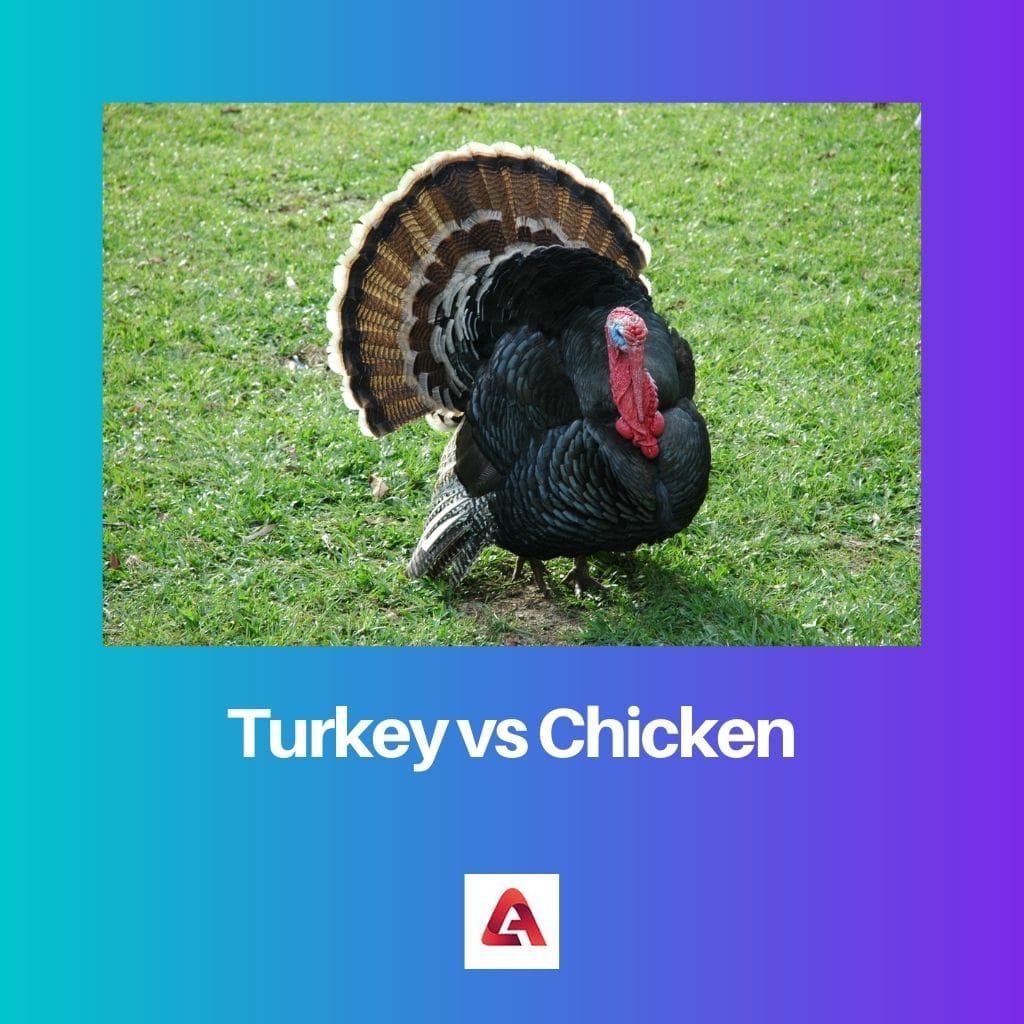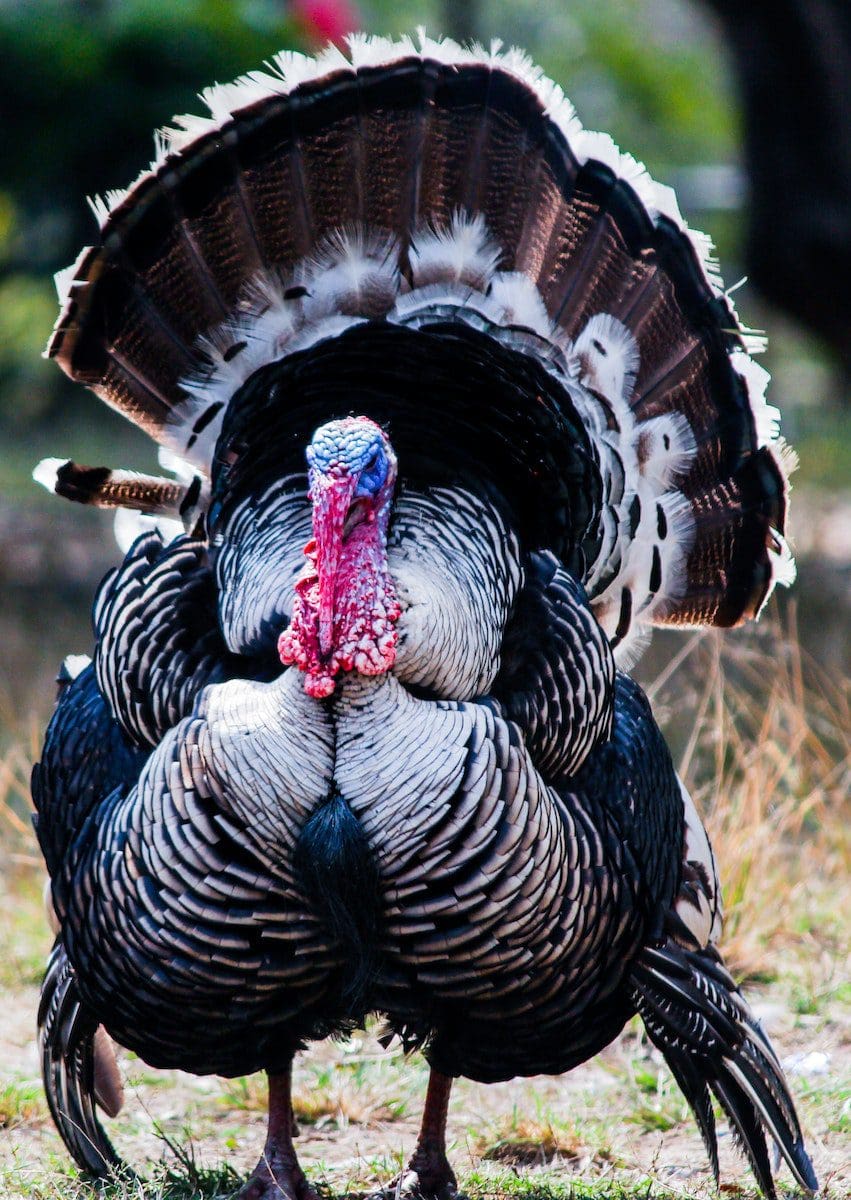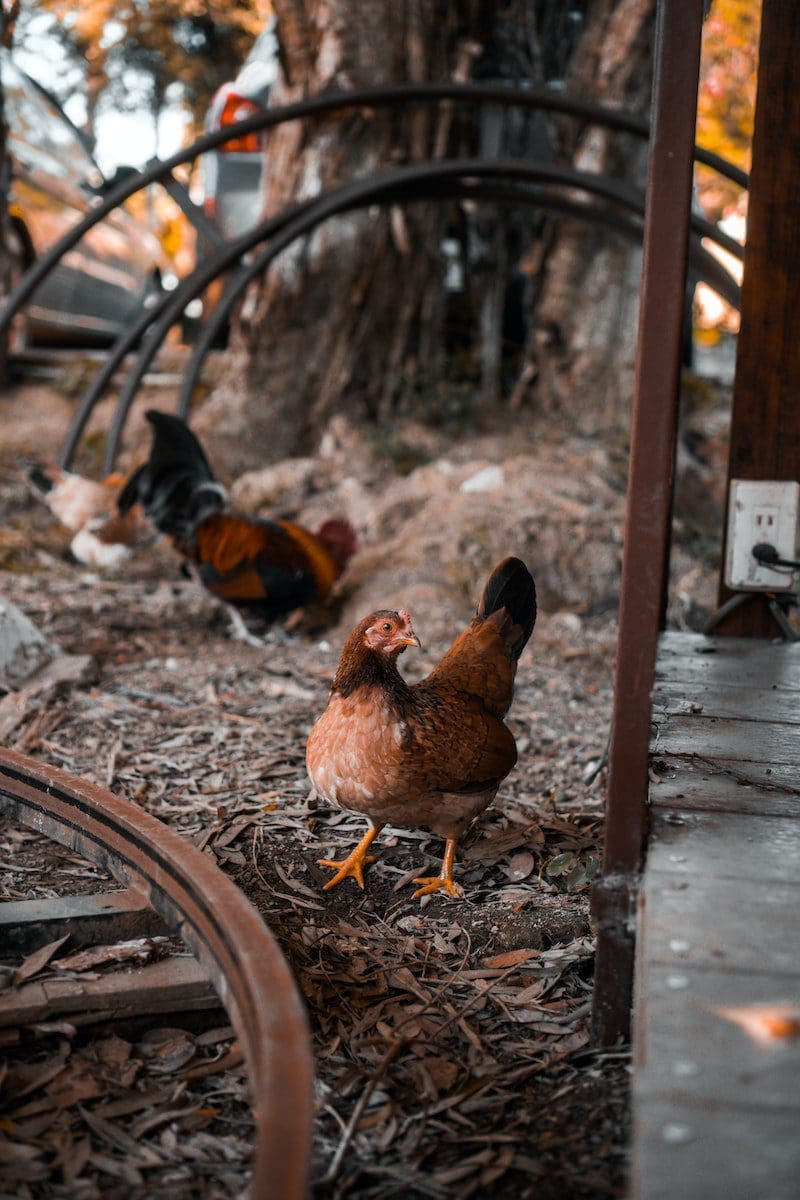Food has always been crucial and necessary for all living beings, whether animals, humans or plants. However, there is a variation of food eaten by different organisms.
Food provides nutrients and energy to the body, which further helps the person perform activities. Energy is essential for all living beings.
There are several animals whose meat is eaten worldwide, for example, chicken, fish, goat, cow, buffalo, camels, octopus, etc.
Key Takeaways
- Turkeys are larger than chickens, with adult males weighing up to 24 pounds, while chickens weigh between 3 to 8 pounds.
- Turkeys have a more robust, gamier flavor than chicken meat’s milder taste.
- Both turkey and chicken are common poultry options in various cuisines, but they differ in size, taste, and certain nutritional aspects.
Turkey vs Chicken
Turkey is a large bird that is widely consumed as a poultry meat. It is a type of poultry that is known for their distinctive appearance, with a long neck, fan-shaped tail, etc. Chicken is a domestic bird, eaten around the world as a source of protein. It is raised on farms for its meat and eggs.

Comparison Table
| Parameters of comparison | Turkey | Chicken |
|---|---|---|
| Feathers on body | Does not have a feathered neck and head. | Has feathered head and neck |
| Colour of body | Black in colour | Colourful plumage. Male chicken are more colourful |
| Uses | Used for meat | Used for meat and eggs as well |
| Colour of meat | Dark in colour | Light in colour |
| Protein content | High protein | It contains relatively less protein |
What is Turkey?
Turkey is a game bird, domesticated in large farms; it has bald heads and red wattles. Eating turkey is a popular and traditional choice for festive occasions, Thanksgiving and Christmas.
They are dark in colour, with large body sizes, and do not have feathers on their heads or necks. Turkeys are heavier than chicken, approximately 15 pounds heavier.
Turkey is descended from the North American wild turkey. The origin of turkey is said to be from the west, unlike chicken. Thus it can be seen that turkey meat is more common in the west than in the east.
Turkey meat is preferable as it has high-quality protein, vitamin B, selenium, zinc and phosphorus. It is recommended for muscle growth and maintenance. Turkey is extensively used for its flesh and not for eggs.
In the market, there is a wide variety of processed meat available. Still, it is advisable not to use processed turkey as it would not have similar nutritional values as average turkey and might contain high salts.
Turkey meat is darker in colour, distinguishing it from chicken, and the calorie content of turkey is shallow. Thus it is recommended for people following a rich protein diet with low-calorie meat.
There are two types of turkey preferred by people to eat: skin turkey and skinless turkey. The difference is that skin-on turkey has unsaturated fats, which are delicious compared to skinless turkey.

What is Chicken?
Chicken is a fowl which is domesticated. Eating chicken is a common practice in the Indian subcontinent on regular days. It is said that the origin of chicken is traced to the Indian subcontinent, but there is no certainty of its origin.
It is descended from red junglefowl Gallus gallus.
Chickens are different in appearance than turkeys; they have feathers on the neck and head, have colourful plumage, and male chickens are more colourful.
Chicken is protein-rich food extensively preferred for muscle growth; besides protein, it has potassium, calcium, fats, etc. Chicken is also used for their eggs which also have high protein.
Eating chicken is not preferred by all, as in India, eating flesh is not preferred by some people. They are called vegan. Unlike the west, eating chicken is not auspicious on special occasions (especially Hinduism).
Chicken flesh is light in colour, and it is even lighter and easy to digest when compared to red meats or lean meats. Chicken helps muscle growth, promotes heart health, aids weight loss, strengthens bones, etc.
Chicken is heavier than turkey but lighter than red meat. There is a large variety of chicken dishes available in the market. Chicken has a peculiar taste, which enhances the taste of any dish.

Main Differences Between Turkey and Chicken
- Turkey is dark, black, while the chicken is colourful, and the male chicken is even more colourful.
- Turkey has more protein as compared to chicken.
- Turkey is extensively used for its meat whereas chicken is used for its meat and eggs as well.
- Turkey originated from America, while chicken originated from India ( although there is no certainty).
- The colour of turkey meat is darker, whereas chicken meat is lighter in the shade.
- Turkey does not have a feathered neck and head, whereas chickens have a feathered head and neck.


While the nutritional and physical differences between turkey and chicken are well articulated in this article, it lacks a nuanced examination of cultural or culinary contexts in which these birds are consumed. A broader exploration of these aspects could enhance the depth of information provided.
The article delivers an in-depth analysis of the nutritional content and benefits offered by both turkey and chicken meat. I find this information enlightening and valuable for health-conscious readers.
I couldn’t agree more. The health benefits and comparison of protein content between turkey and chicken are crucial points presented in this article, catering to individuals concerned with their dietary choices.
Absolutely, the focus on the nutritional aspects of turkey and chicken provides readers with substantial insights, especially for those looking to adapt protein-rich diets.
This article provides a comprehensive comparison between turkeys and chickens. It is a good source of information for anyone interested in knowing the key differences between these two types of poultry.
I agree, the nutritional comparison and origin of both turkey and chicken presented here is quite informative and useful for anyone looking to learn more about these fowls.
The comparison between turkeys and chickens pinpointing differences in color, protein content, and origin is intriguing, making it an enlightening read for those interested in the subtleties of poultry.
Absolutely, the detailed exploration of the unique attributes and differences of turkeys and chickens in this article is fascinating and informative, adding depth to the understanding of these birds.
This article could benefit from a more light-hearted and witty tone that would appeal to a wider audience. Injecting humor into the presentation of information could make it more engaging and memorable for readers.
I see where you’re coming from. A touch of humor and wit in the writing style could indeed make the content more captivating and enjoyable for readers with varying preferences.
The article’s comparison of turkey and chicken serves as a valuable resource for individuals looking to make informed choices regarding their dietary preferences. It presents an array of useful information that readers can apply to their daily lives.
Absolutely, the practical and informative nature of the article makes it a compelling resource for those seeking to understand the distinctions between turkey and chicken, paving the way for healthier dietary choices.
I fully agree. The insightful content provided here equips readers with the knowledge needed to make educated decisions about their food consumption, highlighting the article’s practical applicability.
I appreciate the detailed comparison table on the parameters of comparison between turkeys and chickens. This article does a good job of laying out the distinctions between the two types of poultry.
Exactly, the parameters table is an excellent summary of the main differences, making it easier to understand and remember the unique characteristics of each bird.
This article fails to delve into the environmental impact of turkey and chicken farming practices, which is a significant concern for consumers. Neglecting such an aspect detracts from the overall value of the information presented.
I agree with you. Including an analysis of environmental factors related to turkey and chicken farming would make this article more well-rounded and relevant in today’s context.
I understand your point. Addressing the environmental impact of poultry farming would indeed enhance the article’s comprehensiveness, providing a more holistic view of the topic.
The comprehensive comparison of turkey and chicken in this article is both insightful and enriching, providing readers with a detailed understanding of the unique characteristics and nutritional attributes of these poultry options.
Absolutely, the in-depth analysis and comparison between turkeys and chickens in this article bestow readers with a wealth of knowledge, enabling them to make well-informed decisions about their dietary preferences.
It’s intriguing to learn about the distinct origins of turkey and chicken. The historical background provided here contributes an interesting layer to the comparison between these two types of poultry.
I share your sentiment. The article’s focus on the origins of turkeys and chickens adds a fascinating historical dimension to the discussion, making it a thought-provoking read.